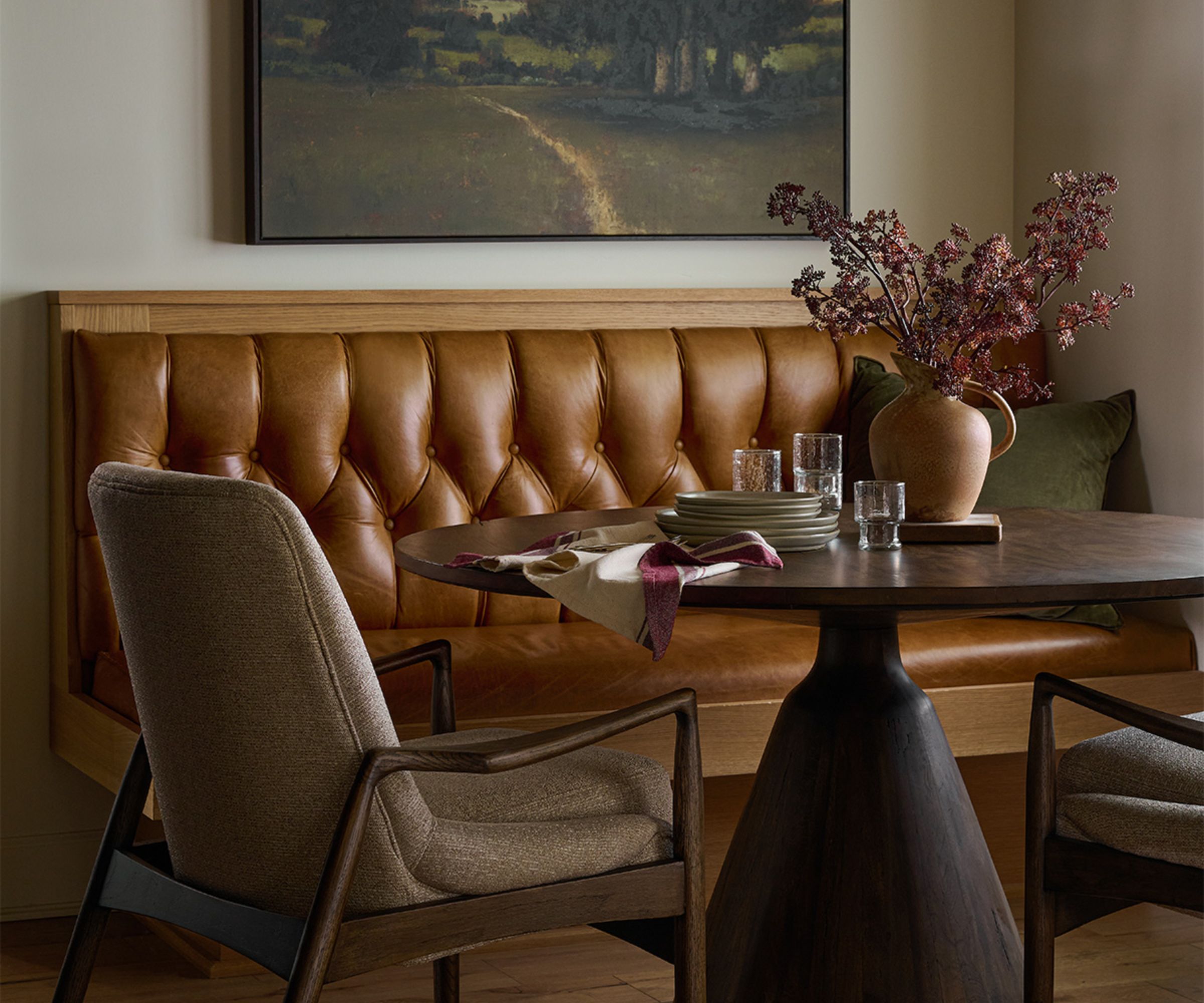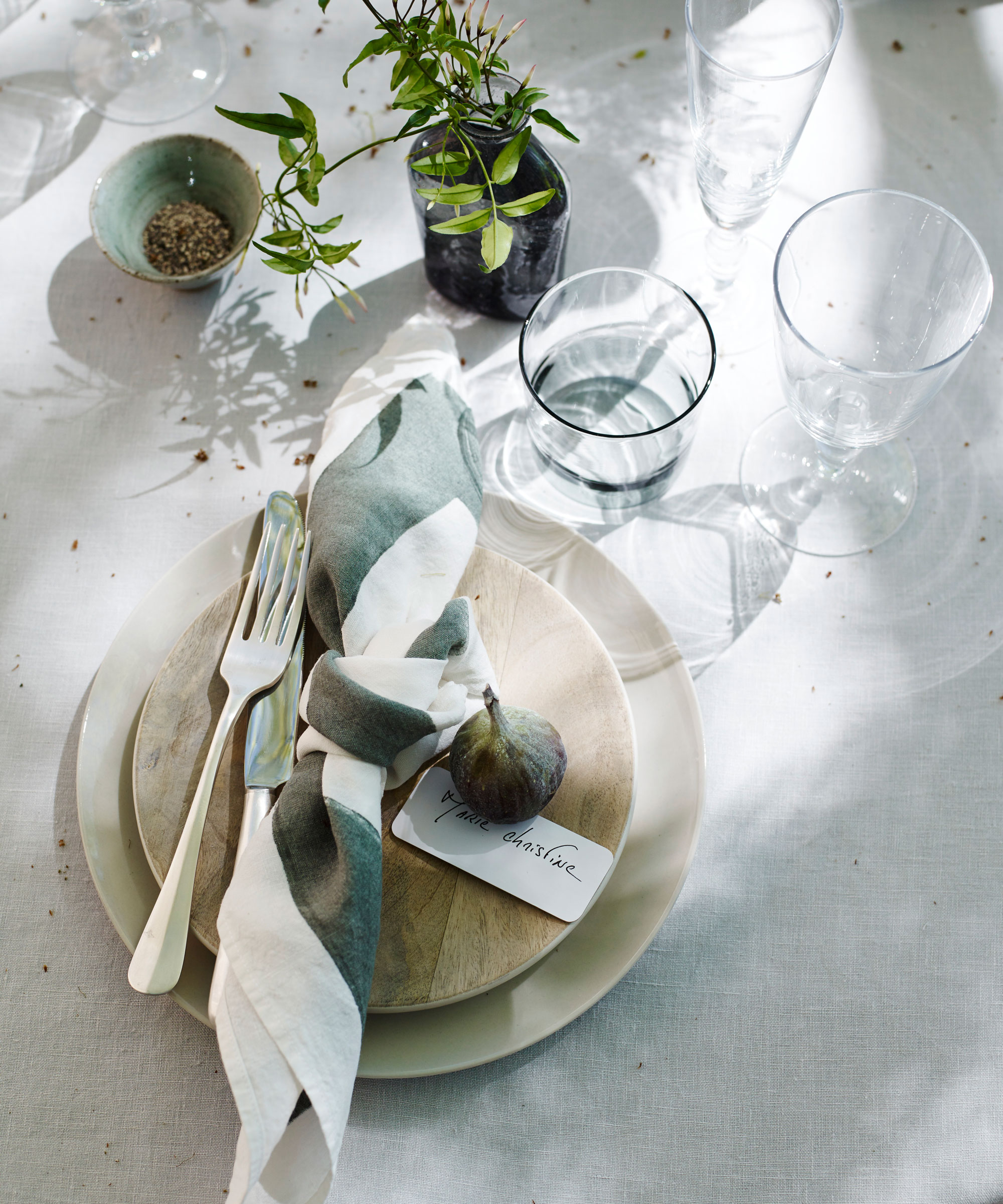
The dining room isn't a space we would usually think of as being hard to clean, especially for those of us who only use it for more formal occasions. But cleaning experts say there are some areas that we regularly skimp on and a few spots that could be much dirtier than you think.
The dining table is for gathering and sharing time together. In order to create a space we look forward to spending time in, the right cleaning tips and methods are essential.
Here, professional cleaners have explained how to clean a dining room properly, from the best products that won't risk damaging your table to tips for making the space feel more special.
How to clean a dining room
How regularly we clean dining rooms largely depends on how often we use them, however, the process remains the same no matter if you have just hosted a Thanksgiving party or are simply freshening up the space after not using it for a little while.
Besides your standard cleaning to remove dust from shelves, frames, and window sills, there are some key areas specific to your dining room you must consider:
1. Pick the right cleaner for your table type

It may be ‘just a table’ but your dining table is often one of the more awkward areas to clean depending on what it is made of, says Angela Brown, professional cleaner and host of the podcast Ask a House Cleaner. Once you have taken everything off the top, including tablecloths, placemats, and centerpieces, you should start by simply dusting the table, using a microfiber cloth, at Amazon, or a duster to wipe away any loose dirt, dust, and crumbs, making sure to get into crevices and corners.
‘If the table is a resin or plastic, or you are cleaning a glass table, it is as simple as washing it down with water and a small amount of mild dish soap or multipurpose cleaner,' says Angela. 'Dip a sponge or cloth into the solution and wipe down the tabletop, scrubbing any stained or sticky areas. Don’t forget to clean under the edges of the table where people grab the table with sticky or dirty fingers to pull their chairs closer. Wipe the table with a damp cloth to rinse away any soap residue and buff dry with a microfiber cloth.
‘A damp microfiber cloth is the best cleaning tool if the table is wood or has a varnish finish,’ she says. ‘You can also use a wood cleaner like Murphy Oil Soap, available at Amazon to remove smudges and sticky residue. Polish the table with a soft cloth and buff it to a streak-free finish.’
Once everything is clean and dry, you can set the table again.
2. Don’t neglect the floor underneath

The floor under our dining tables is always awkward to reach – especially if we have a heavy dining table that feels impossible to move. Nevertheless, this is often one of the dirtiest spots in the room, collecting dust, hair, and crumbs. This spot needs extra attention if you have carpets or dining room rugs.
‘Cleaning under the dining table without having to move it can be challenging but manageable with the right equipment,’ assures Ahmad Jamal, cleaning expert and founder of Cleaners Advisor. We recommend starting by moving all of the chairs out of the way, either taking them to another room or turning them upside down to rest the seat pads on the table, provided that they won't cause damage to the surface of the table.
‘Then, use your vacuum’s crevice attachment to reach narrow areas and remove dust and debris from tight spaces under the table,’ Ahmad suggests. ‘Utilizing a long-handled duster or microfiber cloth can help wipe down areas that can be accessed from the sides.’
3. Regularly launder table linens

We often forget the linens in our dining rooms when doing laundry, but cleaning experts say this is a mistake. Our table cloths, napkins, and other decorative fabric table decor need washing at least once a week with heavy usage, or a few times a month with occasional use, reminds Jade Piper, professional cleaner and operations manager at BetterCleans. You should also add them to your laundry immediately if they have become stained, she adds.
‘Another great tip is to store them in reusable vacuum bags when not in use. This not only saves space in your home storage but also helps seal in their freshness too.’
4. Never forget your dining chairs

We regularly clean upholstery when deep cleaning a living room, so why do we forget when cleaning a dining room?
‘A hot spot many people miss when cleaning dining room furniture is the backs of the chairs, where people touch the chairs to pull them out from the table. Also, as people settle in for a meal, they grab the sides and underneath of the chair to pull it closer to the table,' says Angela Brown.
'After dinner, when pushing away from the table, they touch the same parts of the chairs, often with food or greasy fingers. Be sure to wipe down the chair backs, seat, and underneath sides of the chairs with an all-purpose cleaner and a damp microfiber cloth,’ she advises.
You should also vacuum fabric dining seats or chairs regularly, she adds. ‘Use the upholstery attachment to suck up dirt, crumbs, and dust. Vacuuming helps keep the cushions fresh between deeper cleanings.
‘Try not to let stains set in either, as this will make your job harder in the long run. Blot liquid spills right away with a clean cloth and for sticky messes, and lightly scrape off any residue before spot cleaning.’
You should make an effort to check the care label and laundry symbols, Angela cautions. ‘Look for instructions on how to clean the specific fabric. Some cushions can be machine-washed, and others need professional dry cleaning. If the cushions don’t come off, steam clean them with the best steam cleaner you can afford for a deep refresh. Use a handheld steamer to penetrate the fabric fibers and sanitize the cushions. Let the air dry completely before use.’
5. Look up to your lighting

For a cozy, welcoming dining room, you need good layered dining room lighting – all of which will also need cleaning if you want a restaurant-quality gathering spot, reminds Laura Mountford, aka Laura Cleanaholic, a cleaning expert and influencer.
‘Fabric lampshades can be dusted using a lint roller, metal fixtures with an extendable duster such as a Swiffer, available at Walmart, and light switches should be disinfected using a microfibre cloth soaked in a disinfectant cleaner.’
FAQs
How do you declutter a dining room?
When decluttering a dining room, start with any cabinets that may be holding tableware or table linens, as many homes are guilty of holding on to too many. Cut back your collections to the pieces you use regularly, and maybe one set for special occasions or holidays – and no more. From there, work your way around your dining room decor, getting rid of pieces that don't spark joy anymore, or are a particular hassle to clean around when cleaning a dining room. They are often surplus to purpose and add very little to the space.
How do you clean a wooden dining table daily?
If you have a real wood dining table, it is a good idea to avoid using water and soap to clean it every day to prevent damaging the protective patina and causing staining. For daily cleaning, use a microfiber cloth and wipe loose debris off the table, collecting it in the cloth to go in the trash. If it needs a little more than a dry cloth, then consider a good disinfectant spray that is safe for use on wood surfaces, and test it on an inconspicuous area, such as the underside first.
If you want to make cleaning a dining room a little easier, then it can help to limit how many fabric pieces you use in and around the space, advises Laura Mountford, cleaning influencer.
‘Avoid having too many fabrics that will accumulate dust and dirt so the choices of furniture will make it much easier to keep hygienic and surfaces that will be easier to clean. For example, choose leather chairs over fabric ones, avoid having a rug in place under the dining table, only use a full tablecloth if required rather than keeping the table dressed all the time, and choose a table runner instead. Choose placemats that are easier to wipe clean rather than fabric ones.’







